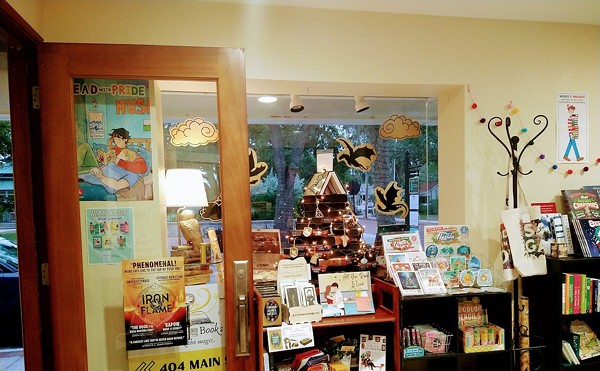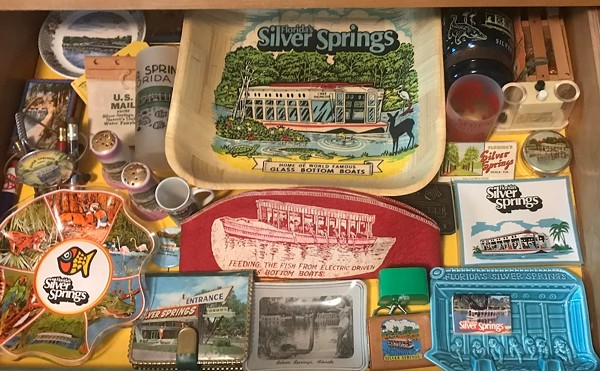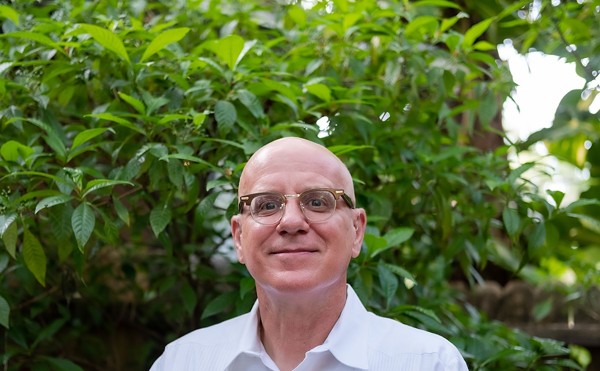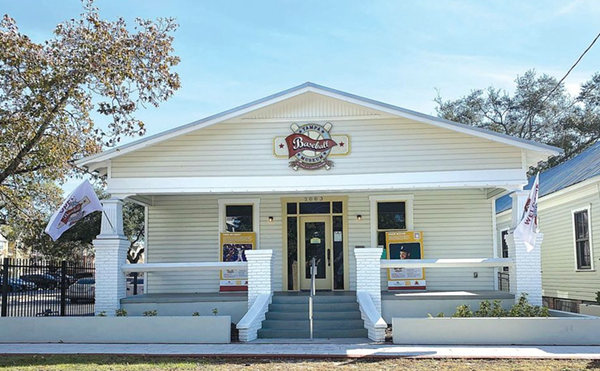Recently, when I asked a local artist how she knew whether a piece of art was finished or not, she responded, “I just know.”
There’s something to be said about trusting one’s intuition when it comes to the balance of color, line, and all those other formal elements that make up the foundation of art. Something just looks and feels right, even if we may not be able to put our finger on it. Guided by those artistic instincts, guest curator Kathy Gibson has rounded up works by Edgar Sanchez Cumbas, Kendra Frorup, Babette Herschberger and Charles Parkhill for Round Square at the Florida CraftArt Gallery that explore the playfulness and elegant simplicity of materials.
Since all of the artists use found and reclaimed objects or surfaces for their work, materials like a chunk of wood or an abandoned shard of metal undergo significant transformations. Longevity doesn’t seem to apply here: the works exist for us in the contemporary moment. Whether or not the materials will last forever isn’t of interest when it’s more important to take hold of the present. Because of each artist’s intuitive approach, the individuality of these formal elements becomes more apparent.
Frorup’s large carousel-like installation “Tickled Pink” draws you into the room first. The sense of the sculptor’s identity as a mother is clear, the cast head of her daughter held high on a pink rolling pedestal that’s attached to a long pole with a handle on it. When a button on the handle is pressed, laughter bursts from the sculpture. The child’s laughter is infectious, evoking the temporality of moments with family that you wish you could capture forever.
Frorup’s installation is the most figurative piece in the exhibition, so it seems appropriate to place Parkhill’s elegant “Torso” in proximity. Precariously perched, its rounded base looks like it could roll right off its pedestal. Most of Parkhill’s sculptures abstractly link to the body, whether in this bulbous form or in his “Bridge” sculpture (reminiscent of Theo Jansen’s anthropomorphic “Straandbeests”).
From Parkhill’s sweeping lines in the almost weightless “Torso,” the conversation shifts to the visually heavy sculptures of Sanchez Cumbas. While still clinging to some connection to the figure, his “Cabinet of Curiosities” departs into abstraction with a focus on rich textures, from the gloriously gritty to the smooth and polished.
Made of all sorts of ambiguous found materials, his works replace collectibles found in nature (and perhaps displayed in a curio cabinet) with manmade objects.
Cumbas uses non-traditional art materials for his sculptures, which ties them into Herschberher’s cardboard wall pieces. Inspected closely, these artists’ works each pay attention to minute details in surface texture. Herschberger’s work is deceptively simple from a distance, but once you get up close, the soft rippling texture of the cardboard comes alive with worn-out ridges, folds and creases. She intends on slowing the viewer down to take notice of the details and beauty around us, even in the things we wouldn’t necessarily consider beautiful — something that all of the artists’ works do.
As more and more artists seek to use found, recycled, or reclaimed materials that aren’t necessarily archival, these works exist to capture contemporary moments for us now. Though there is no lingering anxiety or claustrophobia in the exhibition, the accumulation of these man-made materials feels like a sign of our times: “What do we do will all of the stuff around us?” For these artists, the answer seems to be: We rebuild, reform, re-delineate, re-beautify.
Altering our views of beauty through non-traditional art materials requires a certain amount of empathy and even the ability to set aside one’s convictions to see through the eyes of the artist instead of only seeing a chunk of metal or a flattened Amazon box. All of this begins with conversation. Whether it’s the artist talking to herself in the studio, the viewer exchanging thoughts with the work, or the works talking to each other, those sparks of conversation break the ice.
















